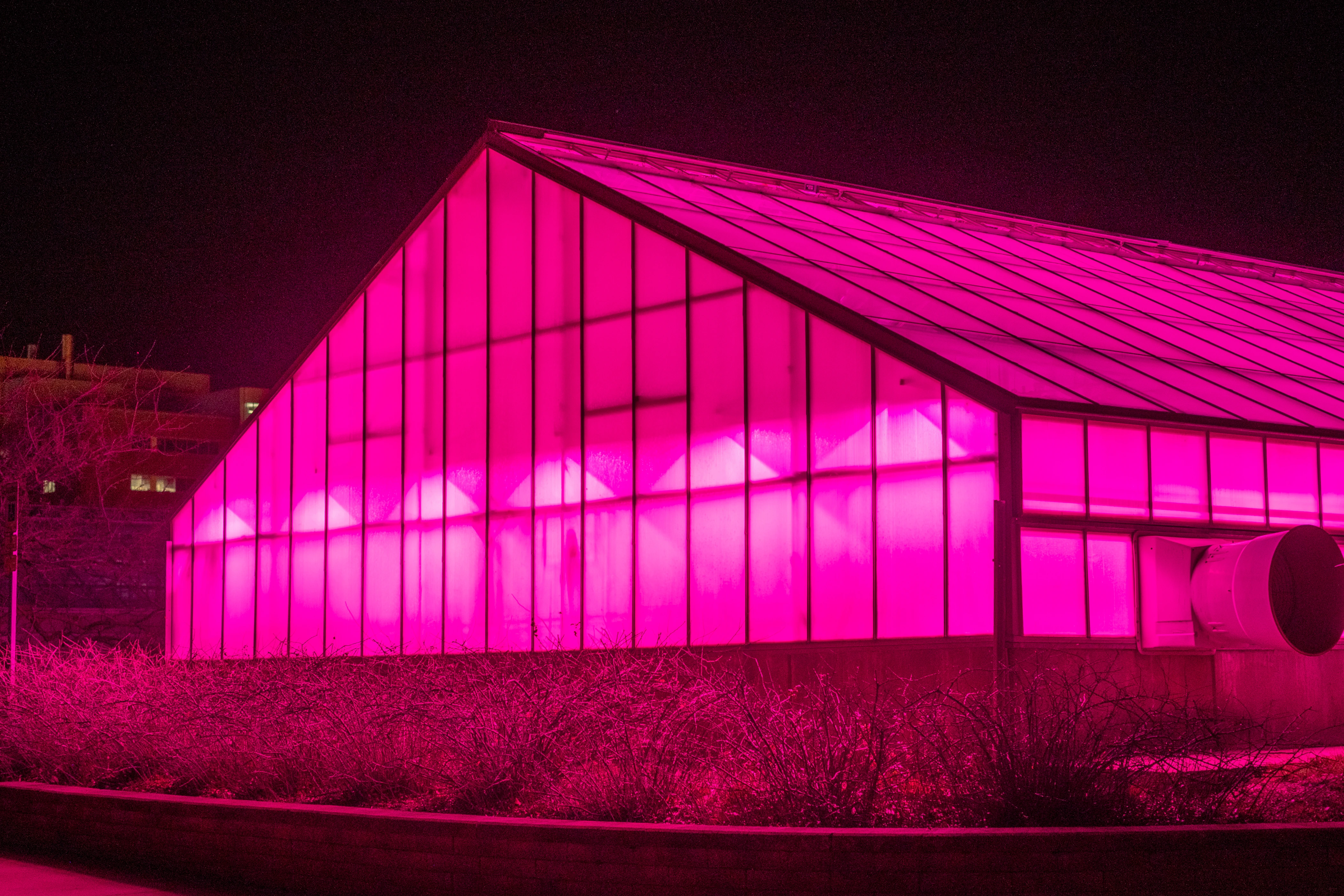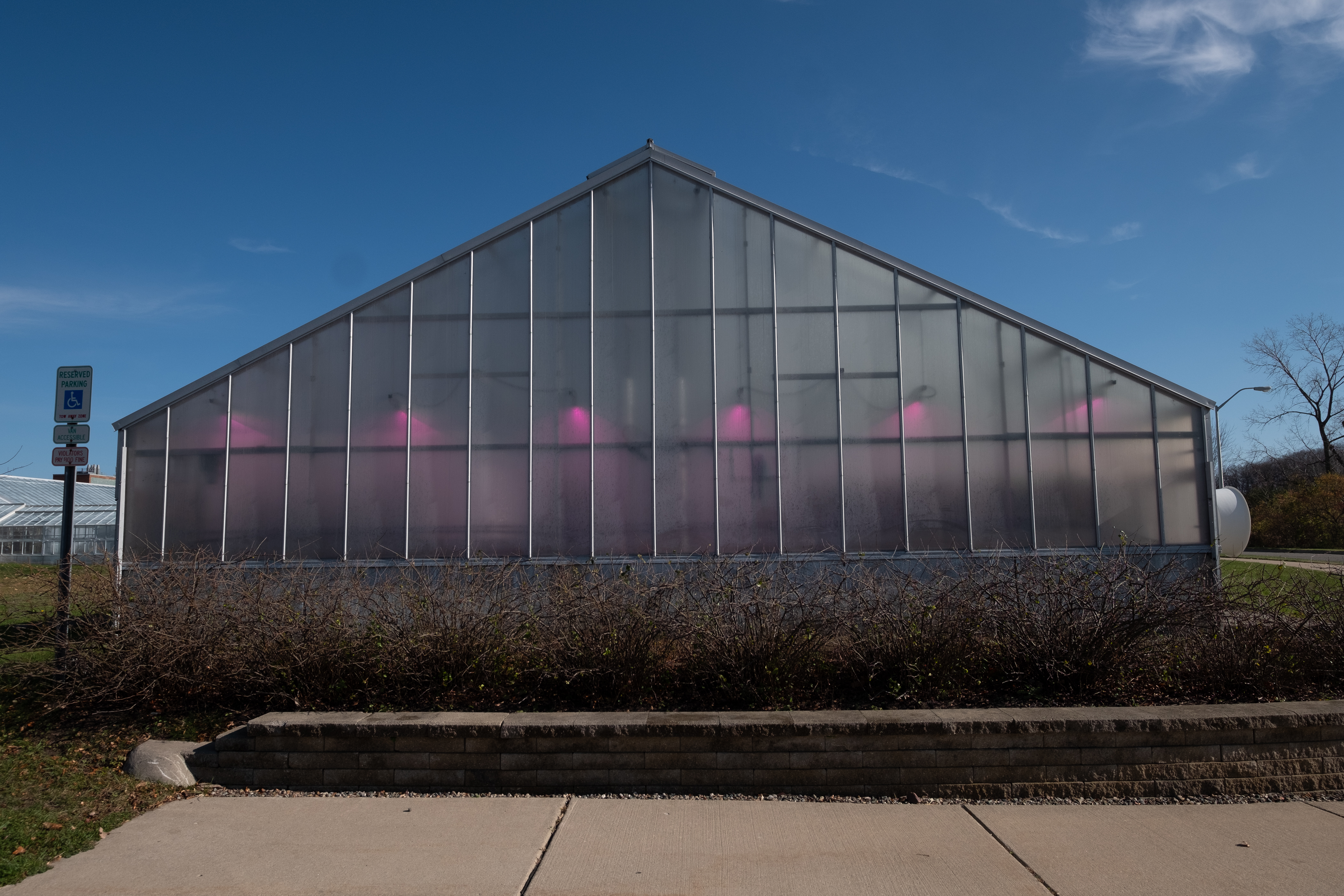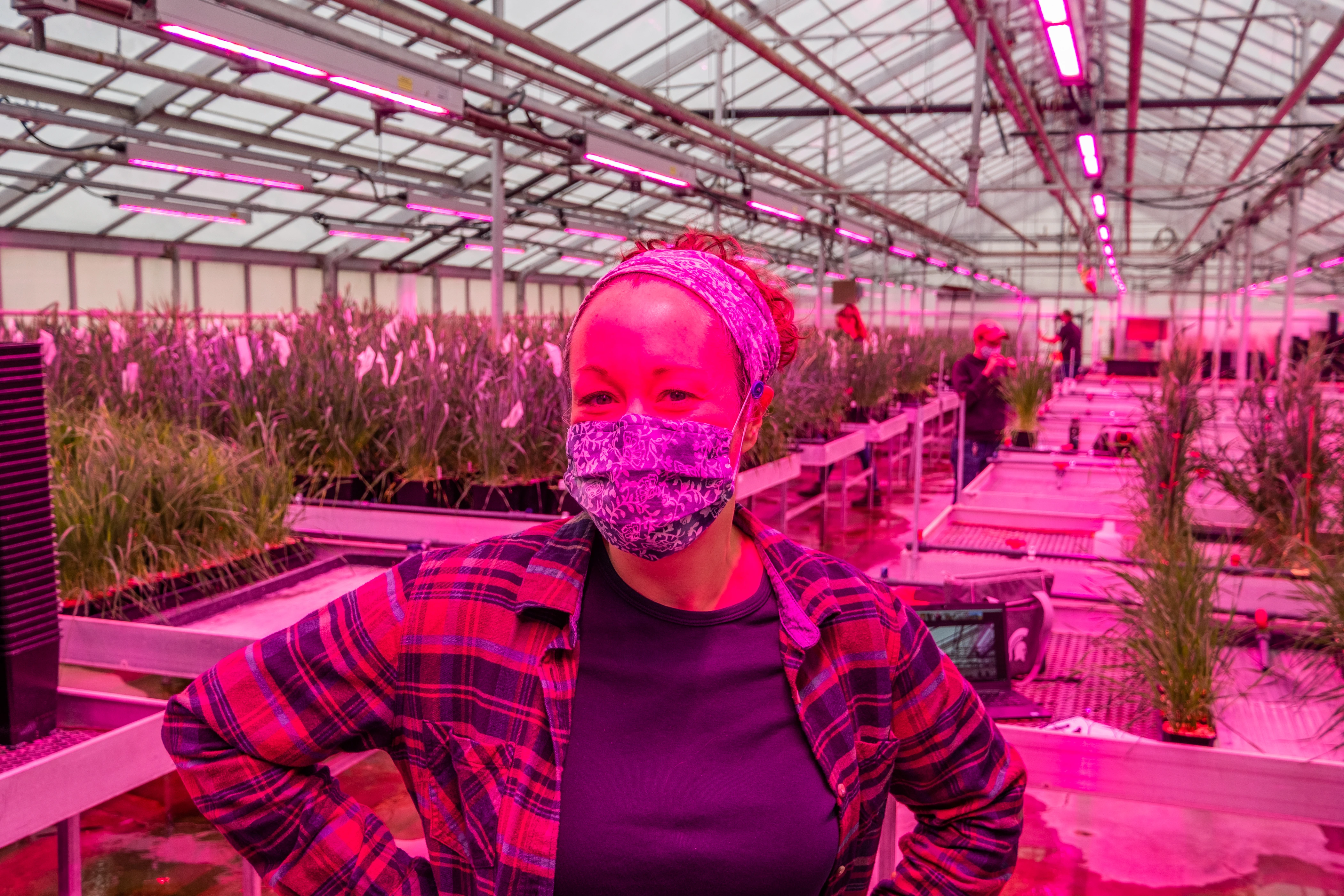“I do what I do to help farmers keep farming. That’s number one for the program,” said Olson, who grew up in a farming community in Wisconsin. And he counts himself lucky to do that work at MSU with his students, his leadership and his colleagues like Particka. “She has great ideas and the team to implement them. They’re focused on helping MSU researchers achieve the best possible research outcomes.”
Larry Thayer, the greenhouse electrician, installed the wheat breeding LEDs and helped install a few more for researchers from the U.S. Department of Agriculture who have joint appointments on campus. And IPF is always available to lend a hand.
The team hopes to continue installing LEDs and making further upgrades to the greenhouses in the coming years with support from the university and the state of Michigan. The pandemic has changed the timetable for those projects, but the commitment to the greenhouses and the university’s role in supporting plant science research remains strong.
“The pandemic has delayed the potential timeline, but greenhouse renovations remain important to the university,” Particka said. “MSU has world-class plant science researchers, and I’m excited to have the opportunity to bring changes to the greenhouses to better support their work.”
So, although it’s difficult to forecast when more LEDs will be added to the greenhouses, it’s clear that these lights are the future. For now, two of MSU’s greenhouses are windows into that future — a couple of hot pink bright spots, rays of sunshine, during increasingly cloudy days.



